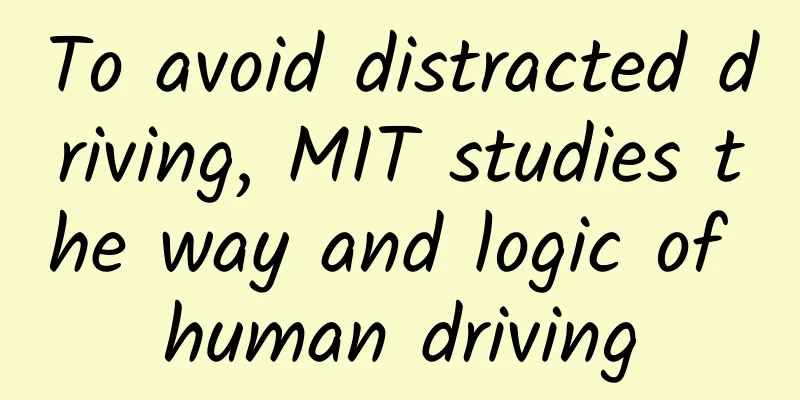To avoid distracted driving, MIT studies the way and logic of human driving

|
It's a time-honored pastime -- yelling at your kids, adjusting the radio, eating a sandwich -- that has spawned a veritable playground of fun: texting Mom on the in-car navigation system, "Send a Text to Your Car." Nearly 40,000 people died on U.S. roads last year, and experts say injuries from distractions are on the rise. If your in-car entertainment can work with you, if they know exactly when you need to look ahead on the road, instead of distracting you, then you're safe. That's what researchers at MIT's Technology Age Lab and Standard Assessments, a Michigan-based human genetics company, are aiming to do. Funded primarily by major automotive and tech companies like Denso, Honda, Jaguar Land Rover, Google and Panasonic, the researchers are working to accurately simulate how humans behave inside cars and model their actions to keep them safe. "How can I make it so that drivers can stay focused while they're entertained and listening to music?" said Linda Angell, a former GM engineer who now leads the company. "How can I complete this architecture so that drivers can look ahead and pay attention to the road, while giving them regular breaks and reminding them to pay attention from time to time?" Last week, the team published a paper that attempts to capture human “attention awareness” in mathematical terms — using an algorithm to do it. One day, they hope that auto suppliers and designers will be able to use this knowledge to build products that help drivers keep themselves and others safe. The topic of "driver distraction" is often talked about by attention-conscious FTW councillors and parents, but it's not a simple idea. There's no on-off switch for drivers. Like many things, attention is a spectrum that combines many elements. "Most of the research in the past has been visual, auditory or tactile, and it hasn't been integrated together," said engineer Douglas Patton. In 2012, government-funded researchers installed cameras and sensors in 2,600 conventional cars in six states for more than a year. The result is a massive, objective, and detailed database of actual driving behavior, the kind of information that’s useful if you want to figure out what exactly causes a crash. The MIT researchers and their colleagues took that database and added another twist. While many scientists, trying to crack the code for why an accident occurs, might look at the five or six seconds before it happens, these researchers insist that they should look at what happens in the 20 seconds before that. "Upstream, before the event, we start to see deficits in attention allocation, suggesting that in the driving environment where the accident occurred, people's attention levels are at their lowest," says Bryan Reimer, who studies driver behavior at MIT. In other words, the problems that lead to disasters begin before the crash. And it all comes down to where the eyes are. Of course, the less you pay attention to the road, the greater the chance of disaster. The amount of time you pay attention to the road also matters. If you spend more time looking at your text message than you do on the highway ahead, for example, you'll start to lose track of where you are. Normally, drivers are pretty good at managing their attention and situational awareness, and figuring out when to look down at the radio. But smartphones and in-car infotainment systems introduce a new problem: Drivers don't really know when to use entertainment products. "If your phone rings, you're driven by a social or emotional impulse to respond," Reimer said. The problem is that the prompt arrives without any consideration of when the best time is. The algorithm the researchers tested in the paper - an AttenD algorithm that dates to 2009 - was good at predicting when a car accident would happen based on how the driver drove 20 seconds ago. This means that perhaps one day scientists could use this mathematical method to build or test products that can be used safely in cars. In situations that require more attention, new, more humane technologies may need to declutter the car's dashboard. Preparing to make a left turn at a large intersection? Maybe it keeps you from ever having to make that move. Driving on the freeway in heavy rain? Maybe it keeps you from having to shuffle through menus to queue up a podcast. This research could also help regulators come up with much-needed standards for semi-autonomous vehicles, or push automakers to design their own. "We're hoping to come up with some kind of numerical rating system," said Patton, Denso's head of engineering. One day, a five-star rating for distraction prevention could be created that adapts to the individual driver's situation (a teenager, a senior citizen or someone with a heart condition). Products like these aren’t ready for the big time. “What makes me nervous about this is that people are starting to use numbers, and I think most people don’t know what numbers are,” said Charlie Klauer, an engineer who studies distracted driving among novice drivers at Virginia Tech’s Transportation Institute. She stressed that designers can’t be relied upon to provide human attention — drivers need to be educated about the dangers of fiddling with things while driving, and police need to enforce existing laws. So, early on, this kind of research will only become more important as more vehicles with autonomous features take to the road. Automakers such as Tesla, Mercedes-Benz, Audi and General Motors already have or will soon have cars with partially automated driving features that can drive on highways. Even in these cars, human drivers are crucial. They need to know when to take back control of the robot. And that means paying attention. |
<<: Artificial intelligence is getting smarter, should we give AI human rights?
>>: A documentary portrait of an industry from a movie
Recommend
If you want to control gout, you'd better avoid these 8 foods
This article was reviewed by Zhu Hongjian, Chief ...
Event Operations: If I were to plan the "Forbidden City Lantern Festival Night"...
The Forbidden City opened its night show for the ...
Wang Chuanfu talks about Jia Yueting's car manufacturing: The road is difficult and there is a long way to go
On August 19, Pan Shiyi, Chairman and Co-founder ...
How to create a personal IP? 3800 words super detailed tutorial
I thought about a hundred or eighty projects, but...
Tesla keeps cameras on to monitor its owners? Musk responds: YES!
Tesla's privacy issues have always been a con...
Why the next O2O giant may be born in the incredible India
From the rising waves to the undercurrent, "...
Check out the four growth strategies used by big companies like Tencent and NetEase
Behind the success of large companies, in additio...
The wind is blowing, but it is the two-wheeled electric vehicles that are blowing
To learn to fly, you must first learn to walk. Wh...
Installing cameras at home? Not recommended
Recently, the topic #Police recommend not to inst...
China Passenger Car Association: Regional market analysis of new energy passenger vehicles in May 2022
According to the new energy vehicle retail data o...
China Charging Alliance: Operation status of national electric vehicle charging and swapping infrastructure in August 2023
Electric vehicle charging and battery replacement...
Tik Tok live streaming and algorithm mechanism
With 0 fans and purely natural flow, how to achie...
It has gone through a lot of hardships and traveled 8 billion light years to see you
Fast radio bursts (FRBs) are mysterious radio ast...
In the battle of autonomous driving, LiDAR is not the key, single-vehicle intelligence or vehicle-road collaboration is the winner
Not long ago, Tesla announced that the autopilot ...









